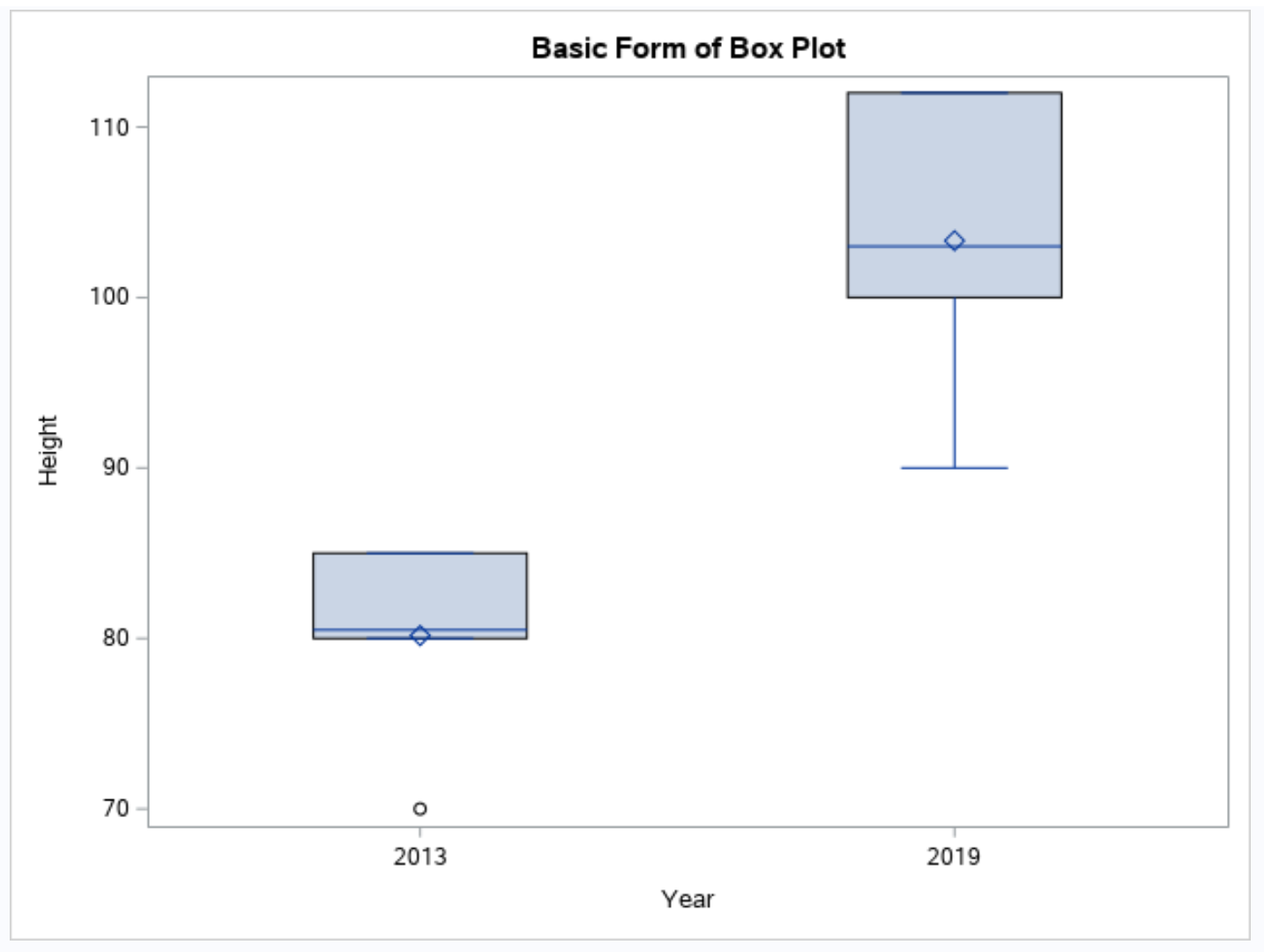The box and whiskers plot, or box plot, it's as popularly called in SAS, is a plot of measurement organized in groups. The box plot displays the mean, quartiles, and minimum and maximum observations for a group. The benefit of a box plot is that it can display a variable's location and spread. It can showcase outliers and provide insight into the skewness of the data:
Title 'Basic Form of Box Plot';
Proc SGPLOT Data=Class;
VBox Height / Category=Year;
Run;
This produces the following chart:

As you can see from the Box Plot, the year 2019 has more variance in the height of students than in 2013.
We can also use the built-in Box Plot procedure as an alternative to the preceding use of the SGPLOT procedure:
Proc Boxplot Data=Class;
Plot Height*Age;
Inset Min Mean Max Stddev / Header='Height Statistics' POS=RM;
Run;
This produces the following...


